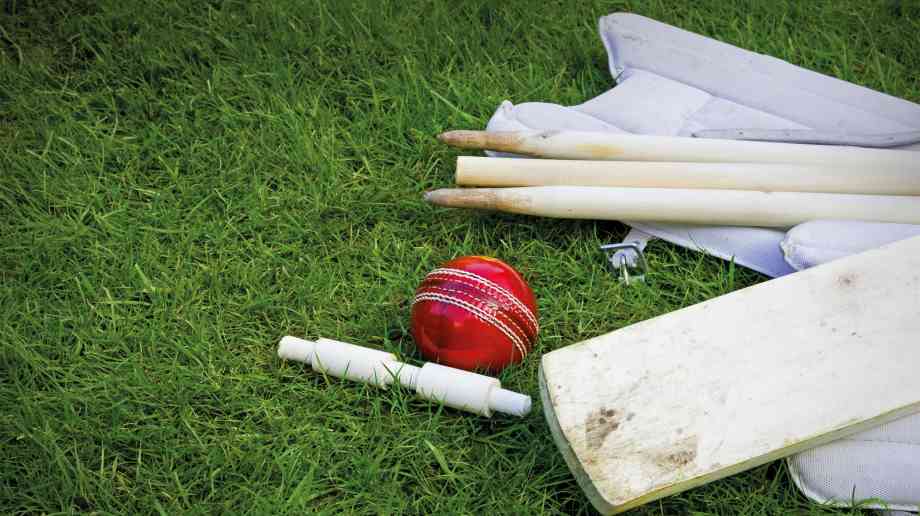
Why investment in school sports is more important than ever
Sport in schools can help to create a much needed active generation among the nation’s youth. The Sports & Physical Education (PE) Association UK discuss why investment in sport is crucial to pupils’ health and well-being.
If you have picked up a newspaper recently, or switched on the news, you can’t fail to have noticed the current debate around childhood obesity. In fact, it has become such a concerning issue that the World Health Organization (WHO) regards childhood obesity as one of the most serious global public health challenges for the 21st century.
The statistics speak for themselves. The National Child Measurement Programme (NCMP) measures the height and weight of nearly one million school children in England each year, and their latest report indicates that just over 19 per cent of children aged 10-11 are obese, with a further 14 per cent classed as overweight.
Perhaps unsurprisingly, much of the discussion has focused on children’s diet and nutrition. Any number of surveys and research papers demonstrate that the majority of children do not eat the recommended minimum of five portions of fruit and vegetables per day, and that children’s intake of sugar, salt and fat has never been higher.
Clearly children’s diets need attention, and there have been a number of initiatives to break the unhealthy eating habit, including: The National Healthy Schools Programme (1998 to 2009), which included healthy and nutritious foods being made available in school canteens and vending machines; The School Food Plan, (launched in 2015), which provided a new set of standards for all food served in schools, offering children more healthy, balanced diets, and withdrawing the provision of unhealthy snacks and drinks in school vending machines; and the much-publicised new sugar tax, which will be imposed on companies according to the sugar content of the energy and fizzy drinks they produce.
Healthy eating may be vital for tackling the obesity issue, as well as for providing for children’s longer-term health and well-being, but it is only half the story. It is essential that we devote similar attention to children’s physical activity and exercise as well.
According to The Royal Society for Public Health’s whitepaper, published in November last year: “Childhood obesity has proliferated in recent decades in part due to children living increasingly sedentary lifestyles where physical activity has declined and activities such as watching TV, playing video games and time spent on smart phones has increased. In 1995, the average child spent three hours a day in front of a screen, compared to more than six hours today.”
Beyond Health
Even if we put the health benefits of activity and exercise to one side for a moment, there are many other motivations for encouraging children to live more active lifestyles. In the government’s Sporting Future, A New Strategy for an Active Nation, the role of sport in school was particularly highlighted: “The opportunity for children to take part in and develop a love of sport and physical activity is vital to ensuring their long-term enjoyment and participation.
“The provision for children and young people will rightly sit at the heart of a new strategy for sport in this country. We want to see healthy, happy active children becoming healthy, happy active adults and the talented primary school children of today becoming our sporting stars of the future.”
Raising healthy, happy children is every parent’s ambition, even if developing tomorrow’s sporting stars is just for the few. Nevertheless, the impact of sport and physical activity has been shown to reach every aspect of a child’s upbringing.
In their annual National PE, School Sport and Physical Activity survey, the Youth Sport Trust researched where schools see a positive contribution from their sport and PE provision. The survey findings reported that schools saw positive contributions to: life skills – confidence, resilience, resourcefulness, teamwork, communication skills (95 per cent); achievement (91 per cent); behaviour and truancy (70 per cent); and attainment (69 per cent).
The Youth Sport Trust’s annual survey is just one example from more than forty research projects undertaken over the last decade that provide evidence for the positive impact that effective school sports provision can make.
In a paper prepared for Ofsted by Loughborough University, these research programmes were reviewed, summarised and compared for trends and similarities. It led to the publication of The value of physical education and sport in schools, which highlighted dozens of positive outcomes achieved through effective school sports provision.
This included: attendance levels (studies show a positive relationship between participation in sports and school attendance); behaviour (research concludes that even a little organised physical activity, either inside or outside the classroom, has a positive effect on classroom behaviour, especially amongst the most disruptive pupils); cognitive function (several studies report a positive relationship between physical activity and cognition, concentration, attention span and perceptual skills); mental health (studies indicate positive impacts of physical activity on mood, well-being, anxiety and depression, as well as on children’s self-esteem and confidence); and attainment (a number of well-controlled studies conclude that academic achievement is maintained or enhanced by increased physical activity).
The research has not gone unnoticed by Ofsted. In its own investigation, entitled Going the extra mile, Excellence in competitive school sport, chief inspector Sir Michael Wilshaw concluded that ‘the real value of competitive sport in schools is the positive effect it has on education’.
Funding and Investment
Now that the Department of Education and Ofsted have placed greater emphasis on sports provision, a school’s investment in PE and sports facilities, as well as in the sports, clubs and activities that it offers, has never been more important.
The ring-fenced Primary PE & Sport Premium helps, but it is designed to support a school’s existing sports investment, rather than replace it entirely. It is hoped that one effect may be that primary schools will increasingly be selected on the basis of the sports and activities it offers, rather than solely on the basis of its performance.
That’s because prospective parents will be able to compare sports provision between schools, both during and after the school day.
Schools will be required to include not only details of their PE and sport provision on their website, but they must also publish details of where their PE and sport premium funding has been spent.
The vision for the Primary PE & Sport Premium is that by the time they leave primary school, all pupils will be physically literate, with the knowledge, skills and motivation necessary to equip them for a healthy lifestyle and lifelong participation in physical activity and sport.
Since Ofsted is holding to account how schools spend their additional, ring-fenced funding, it is worth reviewing how your school meets the Premium’s objectives: engaging pupils in regular physical activity – kick-starting healthy and active lifestyles; raising the profile of PE and sport in school as a means of whole school improvement; Increasing the confidence, knowledge and skills of all staff in teaching PE and sport; offering a broad range of sports and activities to all pupils; and increasing participation in competitive sport.
Using the PE and sports premium, schools can invest in: hiring qualified sports coaches to work with teachers; providing existing staff with training or resources to help them teach PE and sport more effectively; introducing new sports or activities and encourage more pupils to take up sport; supporting and involving the least active children by running or extending school sports clubs, holiday clubs and other clubs; and running sport competitions and activities with other schools.
The funding is reasonably flexible, as long as a school is not using it simply to deliver the basic requirements of the PE element of the curriculum.
The Sports & Physical Education (PE) Association UK, an association under the Federation of Sports and Play Associations umbrella, is the lead trade association, established to represent organisations supplying and manufacturing sports equipment within the education and leisure industries.
Further Information
www.sportsandplay.com
www.sportspe.org.uk
Latest News
12/12/2025 - 07:07
The findings suggest that children and young people attending schools in the North of England are less likely to take part in and benefit from residential visits.
11/12/2025 - 13:52
Ofqual has launched a 12-week public consultation on its proposed approach to regulating on-screen exams in GCSEs, AS and A levels.
11/12/2025 - 09:49
A report by Ofsted and the Care Quality Commission (CQC) finds that support for children with special educational needs and/or disabilities (SEND) who do not attend school full-time is too inconsistent.
11/12/2025 - 09:37
The easy-to-use web-based tool is designed to help schools estimate how an air filter unit could impact air quality and energy consumption in a classroom.
10/12/2025 - 10:40
The government has announced £500 million of investment into the National Youth Strategy, the first in 15 years to be published.







